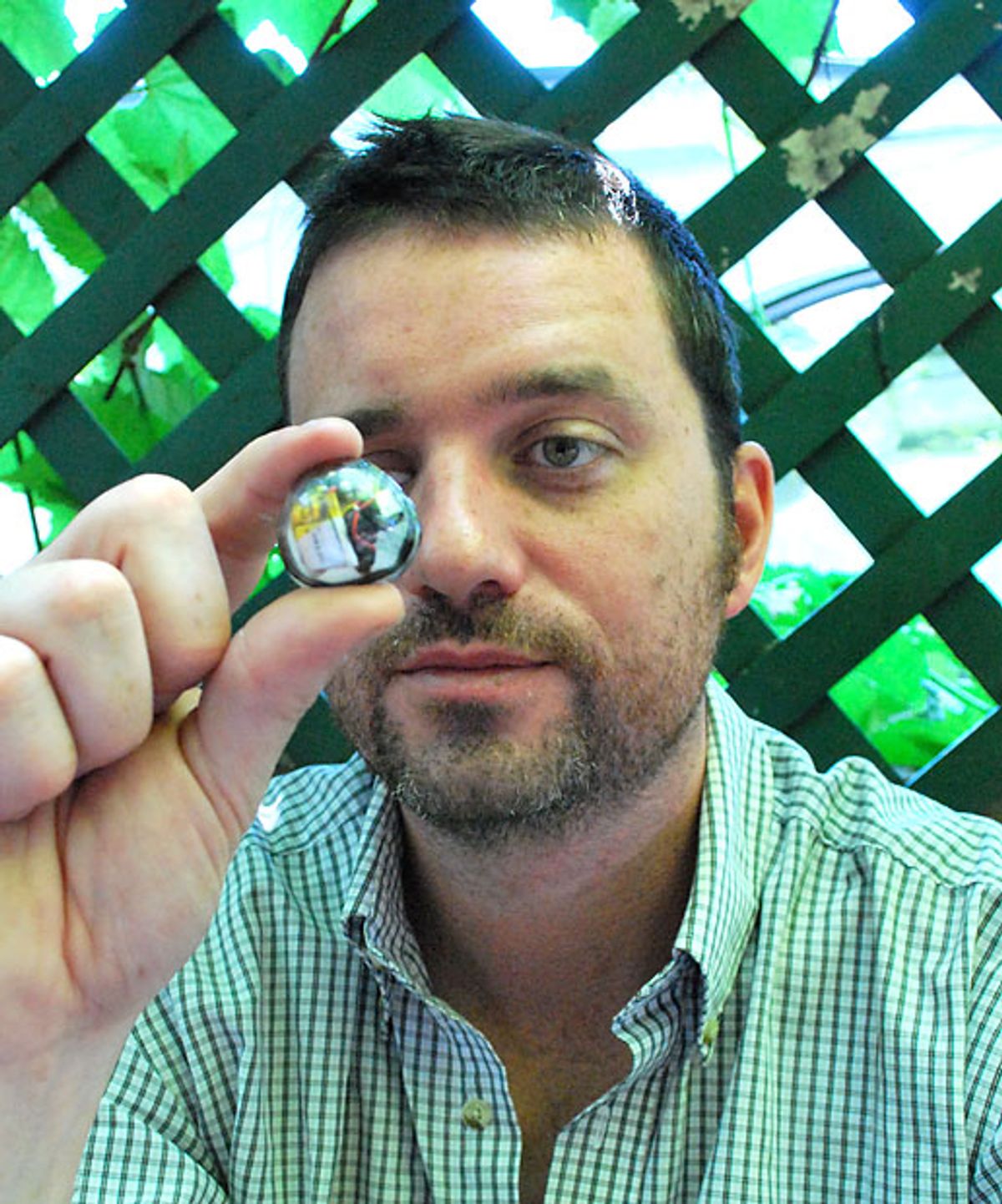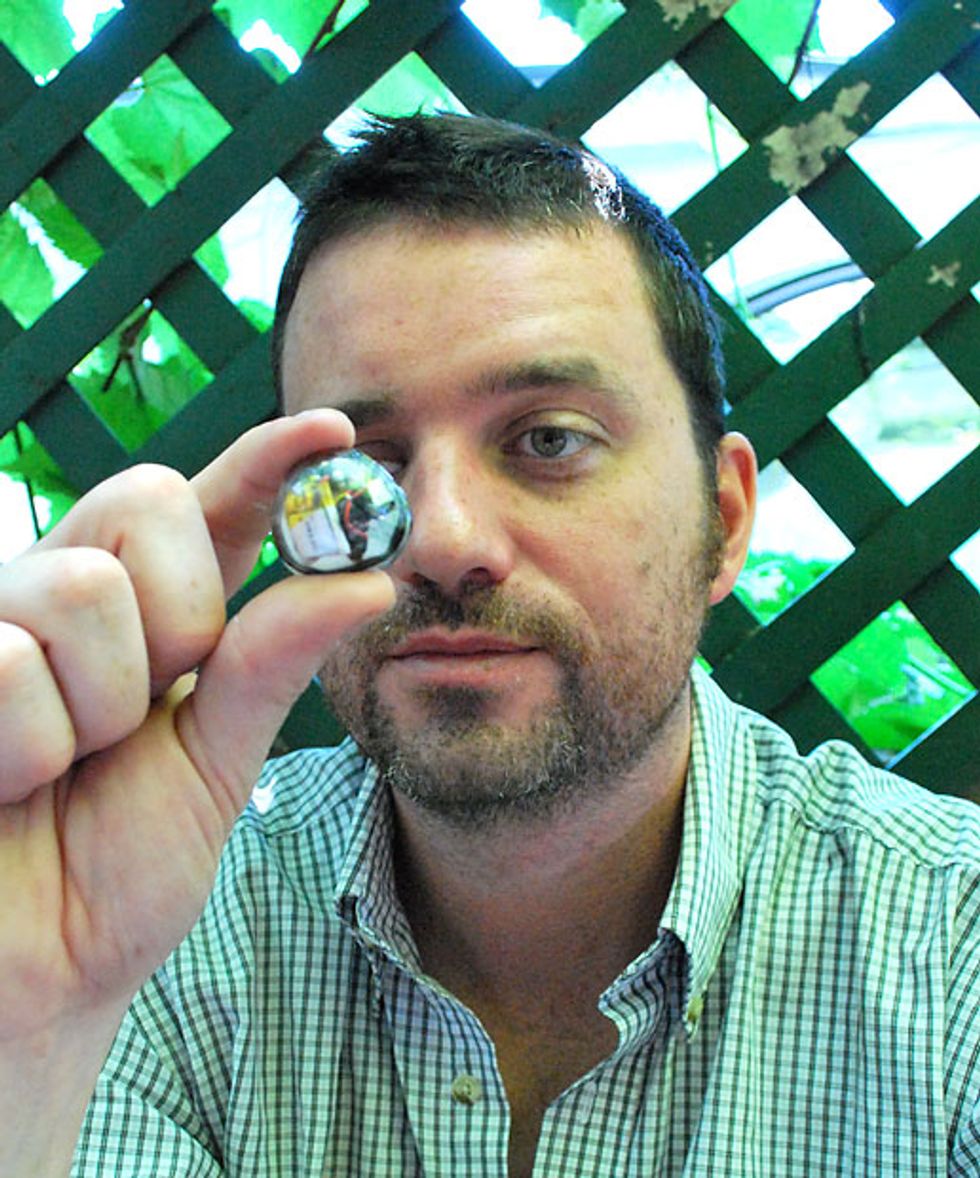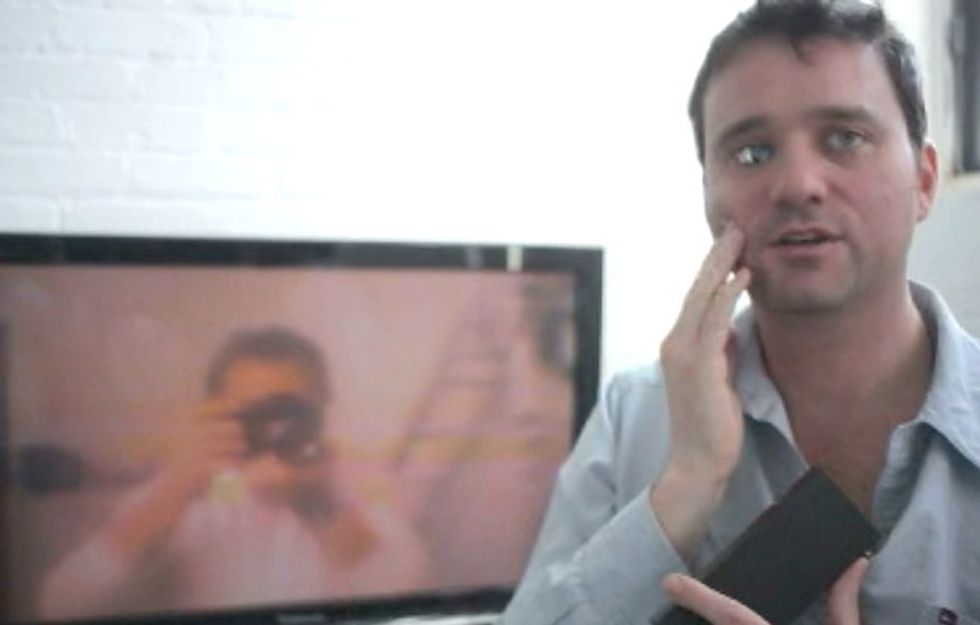Photo: Tim Hornyak
When Canadian filmmaker Rob Spence was a kid, he would peer through the bionic eye of his Six Million Dollar Man action figure. After a shooting accident left him partially blind, he decided to create his own electronic eye. Now he calls himself Eyeborg.
Spence's bionic eye contains a battery-powered, wireless video camera. Not only can he record everything he sees just by looking around, but soon people will be able to log on to his video feed and view the world through his right eye.
Spence and his collaborators—Kosta Grammatis, John Polanski, Martin Ling, Phil Bowen, and camera firm OmniVision—managed to get a prototype working last year. Time magazine named it one of the best inventions of 2009. Now the group is developing a version that offers a clearer picture.
I recently met with Spence in Toronto. In unreleased footage (see screenshot below) that Spence gave me, he demos the prosthetic as a colleague filmed. The feed from the eye-cam is picked up by a wire antenna that Spence held to his cheek, and relayed to a flatscreen TV in the background.
The prototype in the video provides low-res images, but an authentic experience of literally seeing through someone else's perspective. The image is somewhat jerky and overhung by huge eyelashes; a blink throws everything out of whack for a half-second.
Rob Spence demonstrates his bionic camera eye. A wireless camera in a specially designed prosthetic relays a video feed to an antenna that he presses to his cheek. The feed is shown on the screen behind him as a colleague films. Image: Rob Spence
The bionic eye is simply designed, and components are constantly changing. It basically contains a 1.5mm-square, low-res video camera, a small round printed circuit board, video transmitter, and a 3-volt rechargeable Varta microbattery. The components are contained in resealable clear acrylic used in false eyes, but it has two holes for wires to recharge the battery.
"I can recharge my eye via USB off my laptop," says Spence.
The Eyeborg prototype in the video, the third, can only work for an hour an a half on a fully charged battery. Its transmitter is quite weak, so Spence has to hold a receiving antenna to his cheek to get a clear signal. He muses that he should build a Seven of Nine-style eyepiece to house it. He's experimenting with a new prototype that has a stronger transmitter, other frequencies and a booster on the receiver.
"Unlike you humans, I can continue to upgrade," Spence quips. "Yes, I'm a cyborg. But I think that any technology—even clothing—makes people cyborgs."
Spence loves to ham it up as Eyeborg, installing a red, laser-like LED light in one version of the prototype and pulling on a 1970s track suit to become Steve Austin (see the video below). But he's serious about using his camera eye to get Internet users to view the world through his eye, and is developing an Eyeborg app that may feature augmented reality functions.
"In today's world, you have Facebook and camera eyes," he says. "Tomorrow, we'll have collective consciousness and the Borg. It's a collective robot consciousness. I believe that's a genuine modern concern."
Eyeborg seems content to lead us into our robot future.
Updated 06/14/10 to clarify development timeline.





